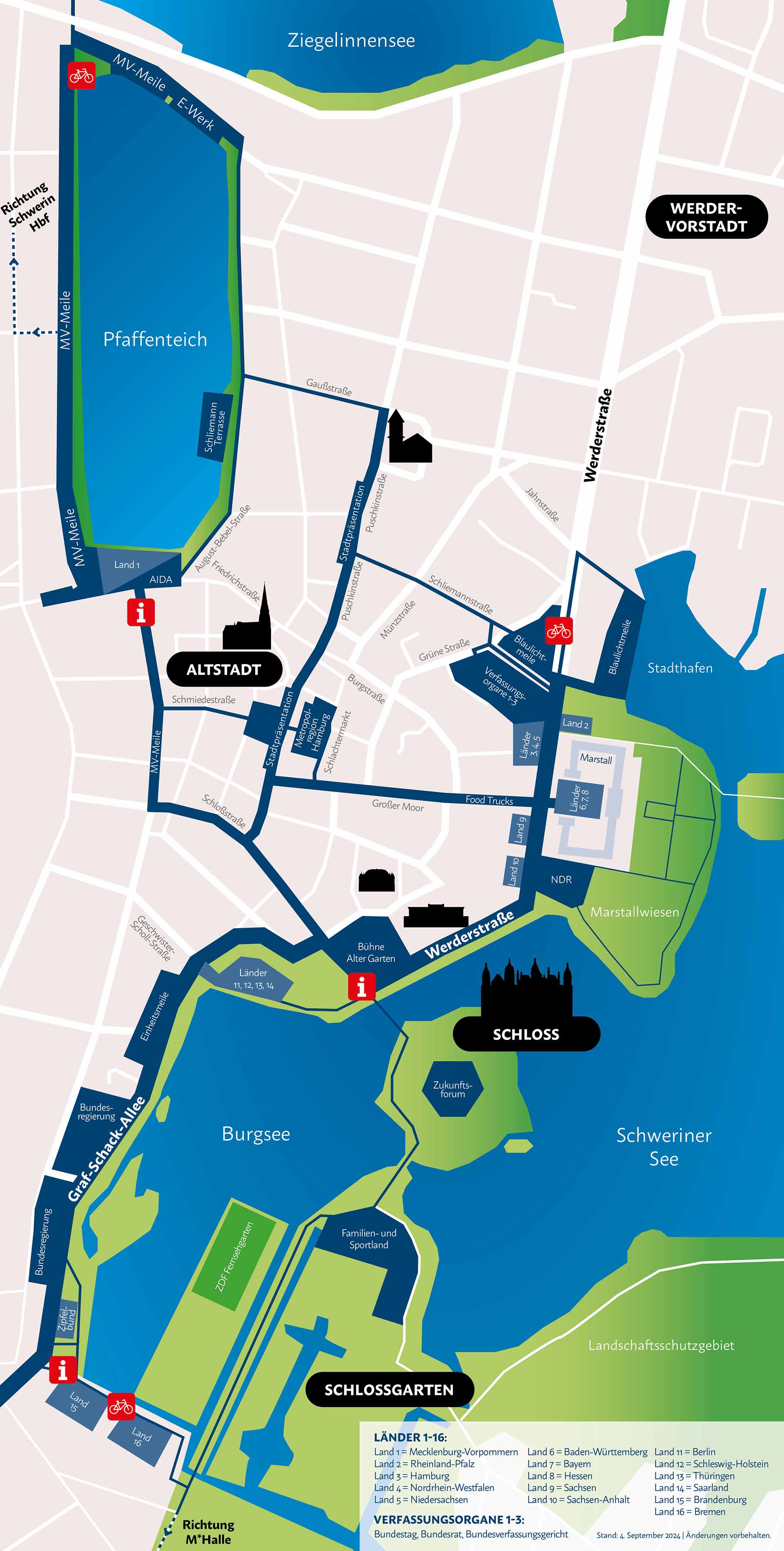
Bavaria
Traditionally different
»Servus«

The Bavarian landscape is varied, with the Alps in the south, the Bavarian Forest in the east, the vineyards of Franconia in the northwest and the Swabian Alps in the west. But Bavaria is more than just glorious countryside: Bavaria is a way of life. It is craftsmanship and modern thinking, tradition and innovation. Thanks to its people, Bavaria remains the way it has always been: traditionally different. Bavaria is a unique holiday destination with an incredible diversity: mountains, forests and lakes, castles and the typical onion domes standing out against the white and blue sky. Explore medieval villages, vibrant cities and university towns. Welcome to the inimitable Bavarian attitude to life!
Capital
Population
5 Highlights
in Bavaria

Allgäu / Bavarian Swabia: Augsburg
Augsburg is characterised by its urban water system: small canals run along the streets and houses, some of which are only accessible via bridges.

Munich
Young people gather to watch the sun set in the evening; the most popular spots are Hackerbrücke and the Olympiapark.

Upper Bavaria: Oberpfaffenhofen
With its Columbus Control Centre, Oberpfaffenhofen is the “Bavarian Houston”. From here the German Aerospace Centre directs space missions.

Eastern Bavaria: Weltenburg Abbey
Weltenburg Abbey, home of the world’s oldest monastery brewery, sits spectacularly in the Danube Gorge in the Weltenburg Narrows nature reserve. The abbey church, built by the Asam brothers between 1716 and 1739, is a Baroque masterpiece.

Franconia: Schweinfurt
An architectural work of art: the Museum Georg Schäfer Schweinfurt houses the most important private collection of 19th century art from the German-speaking world.

BAVARIA AT THE FESTIVAL OF GERMAN UNITY BAVARIA AT THE FESTIVAL OF GERMAN UNITY
It’s a well-known fact that many things are different in Bavaria than in the rest of the country, but while customs are traditionally valued here, we also like to put a modern spin on them. Traditionally different – that’s the essence of Bavaria! The people here are deeply rooted in their home state, and that grounds them and makes them willing to embrace new ideas, fuelled by an authentic zest for life and creativity. In Bavaria, heritage crafts are reinterpreted, old arts are reinvented for the present and centuries-old expertise is fused with new ideas.
Our Bavarian insiders represent this unique blend of tradition and innovation. They are relaxed, cosmopolitan, rooted in the land – and they have a passion for visions that embrace the future. As representatives of their home state, their families and their neighbours, they’ll be sharing personal stories, taking visitors to their favourite spots and revealing the must-do activities in their region. We’ve even invited some of these ambassadors to join us in Schwerin. Dive into the Bavarian lifestyle with live music, street art and local specialties.
FOR GERMAN UNITY DAY 2024:
THE MINISTER-PRESIDENT OF BAVARIA,
DR MARKUS SÖDER

“German unity was a great moment in history.
This is why the 3rd of October is a true public holiday: we remember with deep gratitude the women and men who struggled to overcome a cruel system. Their courage remains an inspiration and a duty for us: in Germany and Europe it is our obligation to stand up together for unity, justice and freedom – every day anew. I wish everyone a harmonious German Unity Day!”
The Bavarian Minster-President
Dr Markus Söder
Member of the State Parliament
FIVE THINGS YOU DEFINITELY DIDN’T KNOW ABOUT BAVARIA
Ahhh, Bavaria! So much is known about the federal state down in the south. We have the Alps, the lakes, cities that are popular photo hotspots, picturesque villages and so much more. But even Bavaria has hidden corners – and little-known facts.
Did you know that: